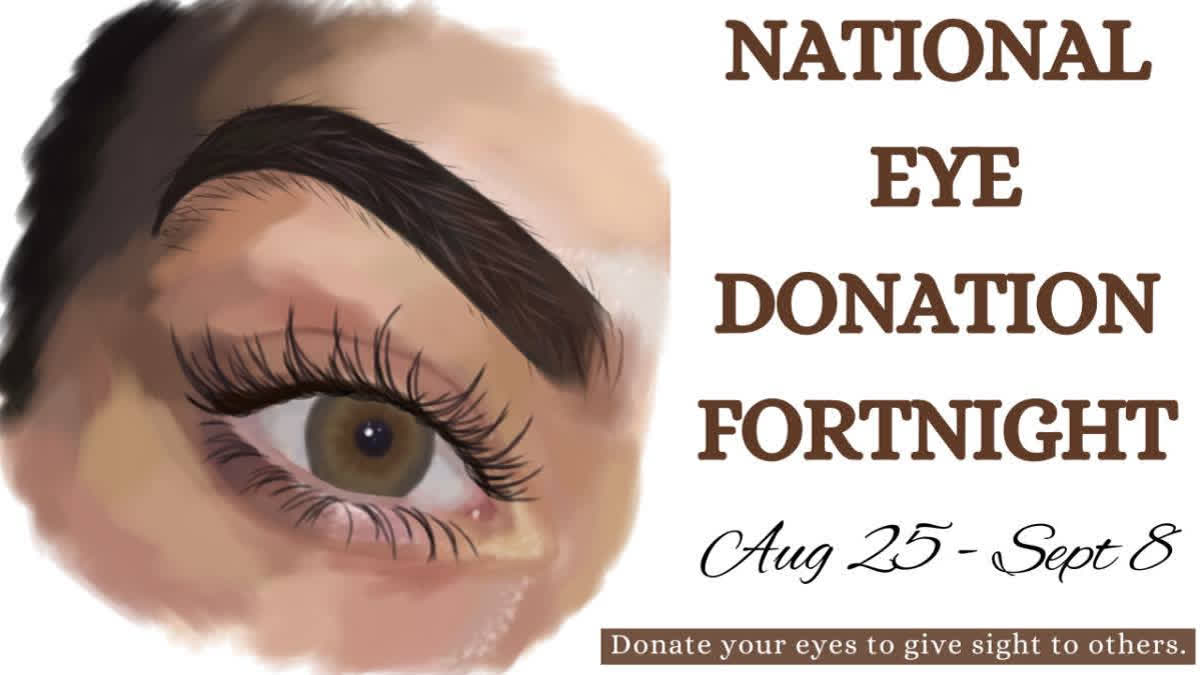New Delhi: To create awareness about the significance of eye donation, the National Eye Donation Fortnight is observed annually from August 25 to September 8. This period aims to debunk myths about eye donation and features seminars and awareness programmes across the country. During this time, local and central organisations collaborate to promote and educate people about the importance of donating eyes.
History & Significance
National Eye Donation Fortnight was launched by the Ministry of Health and Family Welfare (MoHFW) in 1985. Since then, every year, the Central government has conducted awareness campaigns to promote the importance of pledging eyes.
The eye donation fortnight aims to educate people about the importance of eye donation, dispel myths and encourage people to donate their eyes after death. The campaign also aims to address the shortage of corneas for transplantation and break down cultural barriers that may negatively influence people’s decisions about organ donation.
Facts of Eye Donation
Anyone with a cataract, long/short-sightedness, operated eyes, or common ailments, regardless of age, gender, religion, or blood group, can donate their eyes.
Corneal blindness can be treated by replacing the damaged cornea with the donated one (healthy). Within six hours of the person’s death, the cornea should be removed. One donor can provide vision to two corneal blind persons. However, eye donation has not yet received the attention it deserves due to a lack of awareness and societal or religious reservations.
WHO Overview
Globally, at least 2.2 billion people have near or distant vision impairment. In at least one billion of these, vision impairment could have been prevented or is yet to be addressed. The leading causes of vision impairment and blindness at a global level are refractive errors and cataracts.
It is estimated that globally only 36% of people with a distance vision impairment due to refractive error and only 17% of people with vision impairment due to cataracts have received access to an appropriate intervention. Vision impairment poses an enormous global financial burden, with the annual global cost of productivity estimated to be US$ 411 billion. Vision loss can affect people of all ages, however, most people with vision impairment and blindness are over the age of 50 years.
According to WHO, the leading causes of vision impairment and blindness globally include refractive errors, cataracts, diabetic retinopathy, glaucoma and age-related macular degeneration.
National Eye Bank
According to an annual report of the National Eye Bank for 2021-22, more than 31,500 corneas have been collected, over 22,350 visual rehabilitation through corneal transplantation and a greater than 70% utilisation rate since 1965 has been achieved so far. National Eye Bank has also played a crucial role in promoting eye donation activities, corneal transplantation, educating and training the medical workforce, eye banking research, motivating the general public along several other activities.
As per data, 841 recipients at present are on the waiting list at the National Eye Bank located at the Dr Rajendra Prasad Centre for Ophthalmic Sciences, AIIMS, New Delhi.



